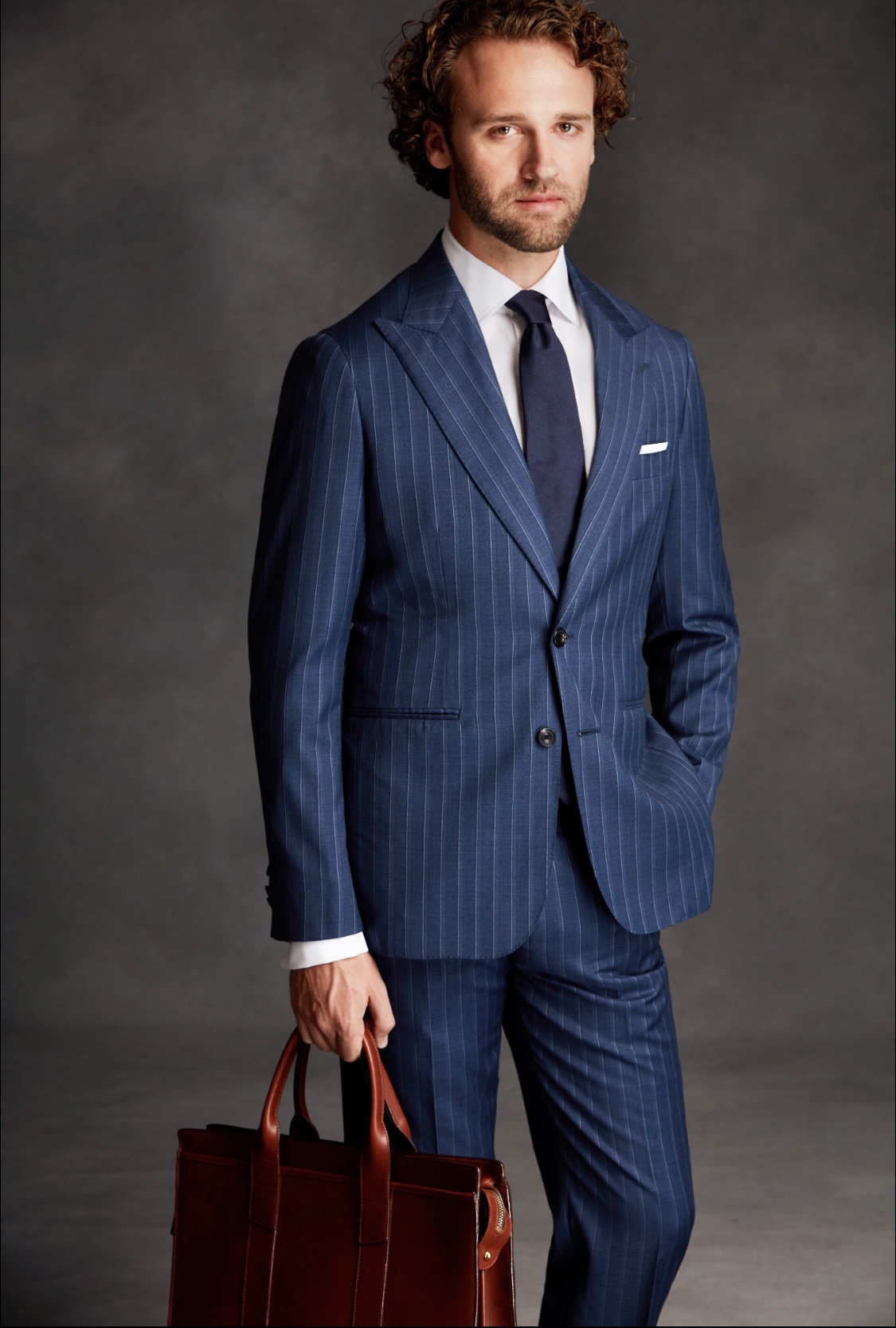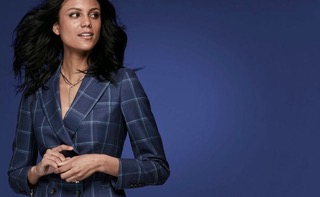9 tips on how to dress for the courtroom

Brenda Swauger. Photo courtesy of BKS Custom Clothiers.
We’ve all heard the cliches: You only get one chance to make a first impression, dress for success, and you are what you wear. While these maxims are familiar, they are also true. You are judged in less than seven seconds, so dressing appropriately can help you win or lose your case.
Whether you enter a courtroom as a defendant, plaintiff, witness, defense lawyer or prosecuting attorney, how you dress makes an impact on a jury or judge’s attitude about you. The goal is to look appropriate and nonthreatening while not distracting from the case.
As a high-end custom clothier/stylist, I’ve advised both attorneys and their clients on how to dress for any situation, including legal proceedings. Sometimes I am brought in specifically to consult in cases to ensure no mistakes are made. I start by asking my clients what their personal style is and how they would plan to dress for the occasion. Once I’ve gotten a feel for their preferences and comfort level regarding color and design, we will jointly decide on a clothing strategy.
Courtrooms command a certain style of dress, and it’s important to dress for expectations. The lawyer should always look a bit more in charge, polished, professional and put together and have a certain command about him or her. The client should always be polished, too but typically a bit more understated. The judge and jury want to know who is in charge.
Below are commonsense tips I share with my clients for dressing in courtroom.
1. Location, location, location
Is your court in the city or suburbs? You can dress for the location. For example, the city court attendees dress more traditionally than those in suburban courtrooms. If attending a court hearing in an urban environment, opt for a solid dark suit—either navy or charcoal—with a white or blue shirt and coordinating tie for men. If court is in the suburbs, it’s still recommended to wear a jacket, but you can also appear appropriate if you opt for a dress pant, white or blue shirt and tie. Many times, if you look on the website of the court system it will tell you what the dress code is.
2. Keep it neutral
Regardless of location or subject matter, ask your client to avoid bright colors such as red, pink and purple, and rather stick to navy, charcoal, white and light blue. Bright colors can be offensive to some judges and give an unintended impression.
3. Go conservative
When in doubt, chose a traditional or conservative outfit. Keep tattoos and body piercings covered up and/or remove piercings if possible. Wear professional footwear and, of course, leave sandals at home.
 Photo courtesy of BKS Custom Clothiers.
Photo courtesy of BKS Custom Clothiers.
4. Keep it professional
Women clients and attorneys should consider wearing a pant suit, dress or skirt and shirt. Clients should never wear shorts, T-shirts or hats, and they should empty their pockets of excessive items that can make noise or draw attention.
5. Consider a trim
Grooming is important and can present a positive first impression. Clean your hair and clothes before court, brush and style short hair, and refrain from wearing brightly colored hair. Consider a haircut, and trim excess facial hair before making an appearance.
6. Fit is it
Fit is important, and your garments should not be too big or too small. If the clothing is too tight or low cut, it can undermine credibility. I recommended skirt or dress hem lengths fall at the knee. Make sure pants are the right length, so as to avoid tripping and/or having to wear extremely high heels to accommodate.
7. Keep it simple
It’s best to keep accessories to a minimum, including jewelry, scarves and patterned shoes. I suggest small earrings, and if married, only a wedding ring.
8. Get smart—or not
Glasses and/bifocals can change your appearance and give the impression of intelligence. In certain cases, attorneys may suggest clients wear glasses in place of contacts. However, if your client is a defendant in a white-collar crime case, it might be good for him or her to forego them, where the impression might skew toward “shrewd” or “cunning.”
 Photo courtesy of BKS Custom Clothiers.
Photo courtesy of BKS Custom Clothiers.
9. Subject matters
Consider the subject matter of the case when planning what your client should wear. If your case is related to a financial matter, attorneys should advise defendants to dress down, not to overplay brand names and cutting-edge styles. By wearing expensive clothes, jewelry or accessories, you could give the wrong impression, ultimately even affecting the outcome of your case. Dressing a domestic violence survivor vying for child custody and supervised visits in a floral print dress and cardigan sweater versus a power suit should play more sympathetically with a judge.
The biggest danger of not dressing the part is not being perceived as honest. I have witnessed this personally. Wearing the wrong clothing in legal proceedings can surely make a difference in perception—this applies to both the attorney and the client. The impression is important to the judge, jury and audience. People are always “sizing you up” and making judgment calls based on the image you are putting forth.
Dressing the part includes being aware of dress codes and what (and what not) to wear. Legal settings offer different challenges, as often the jury is a diverse group of individuals deciding the fate of your client, based on subtle nuances, including nonverbal behavior and dress. It’s important to discuss ways style and dress can influence the verdict.
Brenda Swauger, owner and founder of BKS Custom Clothiers, is an expert in the fashion industry and has worked with luxury fashion brands such as COACH, Paul Stuart and Louis Vuitton. She has received her formal training from the Custom Tailors and Designers Association, learning the craft of design, styling and measuring. She has dressed several Chicago-area luminaries, including Craig Duchossois, CEO the Duchossois Group; Gale Sayers, a former Bears player and NFL Hall of Fame inductee; Jamie Navarro, former Cubs & White Sox pitcher between 1989 and 2000; Tim Jahnke, board member of Elkay Manufacturing; Michael Canady, vice president of global services for Discover; and Steve Rogers, president of Elkay Manufacturing.
ABAJournal.com is accepting queries for original, thoughtful, nonpromotional articles and commentary by unpaid contributors to run in the Your Voice section. Details and submission guidelines are posted at “Your Submissions, Your Voice.”
See also:
ABA Journal: “Lawyer fashion evolves to reflect personality and tradition”
Your Voice submissions

The ABA Journal wants to host and facilitate conversations among lawyers about their profession. We are now accepting thoughtful, non-promotional articles and commentary by unpaid contributors.

